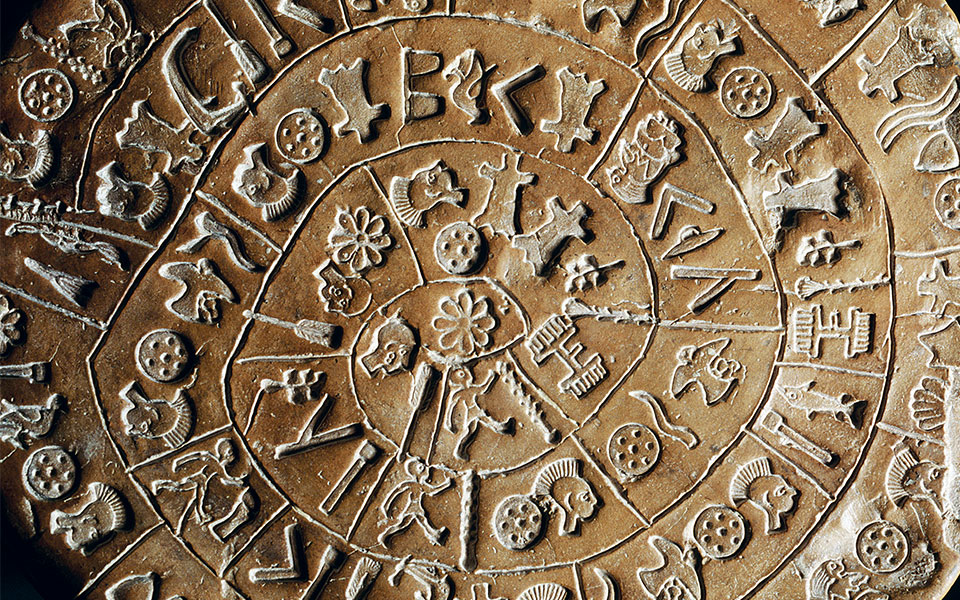The results of a 10-year study by British linguist Gareth Owens and Oxford University phonetics professor John Coleman to decipher the famously enigmatic Phaistos Disk of Crete will be presented at Cambridge University on February 3 in a lecture titled “From Linear B to the Phaistos Disk.”
The disk was discovered during excavations at the site of the palace of Phaistos in 1908 and is dated to 1700 BC – the end of the middle period of the Minoan Bronze Age civilization.
The effort to decipher the script eluded experts for decades, but according to Owens, an expert on Minoan scripts, and Coleman they can now read “99 percent” of the text, which is a Minoan lyrical hymn to a goddess.
Owens has described the hymn as “the bible of Minoan Crete.”
This article was first published on ekathimerini.com










